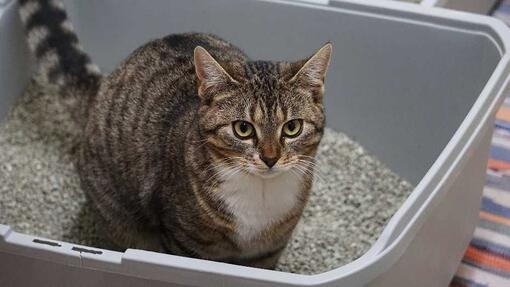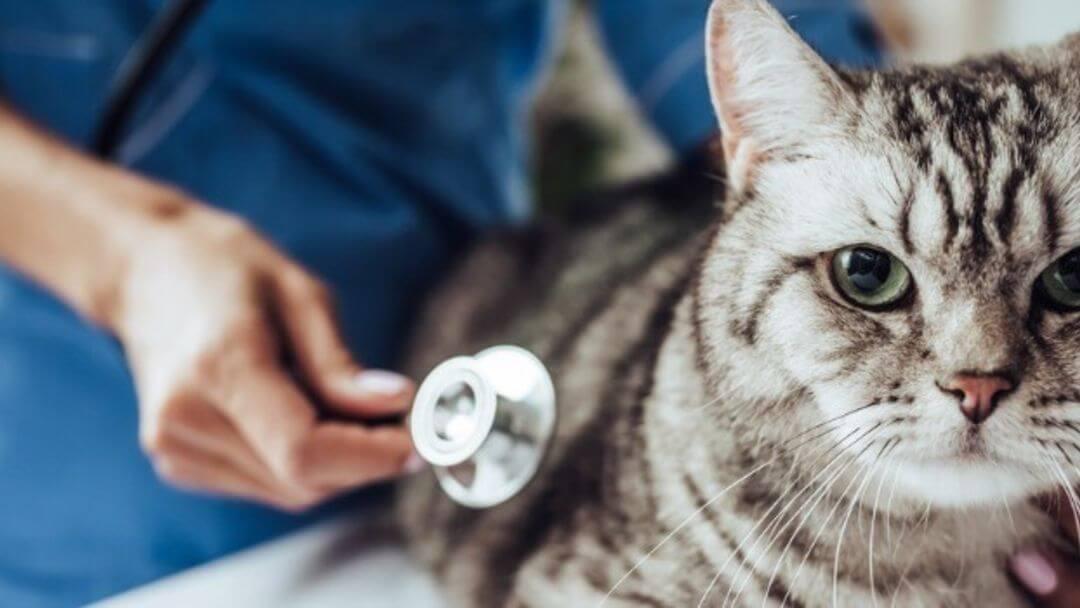Blood in Cat Urine: Causes & Other Symptoms to Look Out For

Blood in a cat’s urine is a worrying sight. Also known as ‘haematuria’, it can be a sign of a few different urinary tract conditions which is why it’s important to get your cat checked by a vet. Our article covers what other symptoms to look out for, what it could mean for your cat and ways to prevent it.
Symptoms to look out for when there’s blood in your cat’s urine
Your cat’s urine will usually be red if there’s significant blood in it, although small amounts may be hard to see. Along with this, there are some other symptoms you may notice:
- Straining when they urinate
- More urination
- Repeatedly going in and out of the litter tray
- Vocalisation when in the litter tray
- Your cat is drinking more water than usual
If you notice more severe symptoms, such as the following, you should see a vet urgently:
- Bleeding from the nose, gums, ears, rectum or eyes
- Blood in vomit
- Blood in faeces
- Bruising on the skin
If your cat is unable to urinate, which is more common in male cats, this is an emergency and you should contact your vet straight away.
Why is there blood in your cat’s urine?
If there is blood in your cat’s urine, you will need to contact your vet straight away. Below are some of the reasons why there might be blood in your cat’s urine, but your vet will be able to give you a proper diagnosis.
Many of these conditions are grouped under the general descriptor of ‘feline lower urinary tract disease’ (FLUTD). This broad group of conditions includes bladder stones, feline idiopathic cystitis, urethral obstruction, urinary tract infections and more.
Feline idiopathic cystitis (FIC)
Feline idiopathic cystitis is a very common cause of blood in cats’ urine. The exact cause of this condition is unknown, but it isn’t infectious and stress, obesity and dehydration play a role. Some cats are prone to repeated bouts of FIC, so it’s important to discuss prevention with your vet as well as managing any acute flareup.
Urinary tract infections
UTIs are much less common in cats than in dogs. Most cats that appear to have a UTI have FIC instead. UTIs are more common in senior cats and female felines, but they can sometimes happen in younger cats too. Make sure to contact your vet if you’re concerned.
Bladder stones
Bladder stones can cause straining and lead to blood in the urine. Pay attention to unusual vocalisation while they are in the litter tray, as this could be a sign of painful urination. Cats with bladder stones are at increased risk of infections and acute blockages.
Bladder cancer
Though uncommon, blood in your cat’s urine can also be a symptom of bladder cancer. Always check with your vet to find the best course of action.
Trauma
Inflammation of the kidneys or urinary tract can lead to blood in a cat’s urine.
What’s the treatment for blood in a cat’s urine?
Blood in a cat’s urine is usually a symptom of an underlying issue. So, the treatment depends on what’s causing it, which is why it’s so important to get it checked out by a vet. Treatment for bladder stones is very different compared to the treatment needed for feline idiopathic cystitis, for example. Your vet will be able to diagnose your cat and give you a treatment plan.
Can blood in a cat’s urine be prevented?
Some conditions that cause blood to show up in their urine are unpreventable. But there are a few things you can do to reduce the risk of FLUTD:
1. Offer your cat a well-balanced diet
Ensuring your cat has a well-balanced diet is super important for their health. The right nutrients in their cat food might help prevent them from developing certain health issues.
2. Make sure they are hydrated
Your cat always needs access to clean and fresh water to ensure they’re staying hydrated. They get water from their wet cat food too, so if your cat isn’t a big drinker, this can help to reduce their risk. Cats prefer to drink water away from their food and litter tray, so positioning water bowls appropriately can help. Less concentrated urine is less likely to produce bladder stones and can help to lower the risk of FIC and other conditions.
3. Reduce stress
Stress is a factor that can affect your cat’s physical health and lead to FLUTD. Making sure your cat has a cosy, safe place to rest, a clean litter box to relieve themselves (you should have as many litter trays as you have cats, plus one extra), a space to play stimulating cat games, and a clean place to eat are all factors that reduce cat anxiety and stress.
If you’re concerned about your cat, make sure to contact your vet straight away. It’s not a good idea to assume your cat’s condition will improve on its own if there’s blood in their urine. You’ll need a vet’s professional opinion.
We hope this guide on understanding why there is blood in your cat’s urine was helpful. It’s a worrying sight, so it’s important to contact your vet promptly. Next, see our guide on unusual cat symptoms to keep an eye on for further help on cat health.











